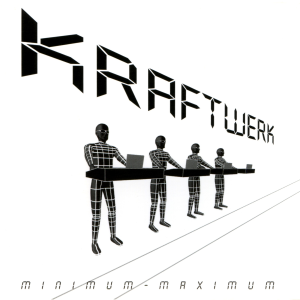I have always been afraid to install Arch because they tell you it is difficult to install and unstable. I want a simple system following the KISS philosophy and install only what I need, which is little. I don’t need anything from the aur repository, for now. Just a year ago I installed Arch and there it is, no problems and doing every day pacman -Syu. It has been a real discovery for me, it’s the only distribution I’ve had this last year that hasn’t crashed. I didn’t expect it, but Arch has made me change my opinion and pay less attention to the opinions of “youtubers” and more to my own experience. In your experience of use, has Arch been stable in its operation?
I have had the same Arch install for years where Ubuntu on the other hand breaks after 2-3 major version upgrades from accumulated cruft.
It is important to keep Arch updated but sometimes I go a month or two without doing it.
Occasionally they have some update that’s not backwards compatible and you have to be a bit careful about it but if it breaks someone already has the answer on the forums from earlier that week. You can also install “informant” which displays the latest arch news post before installing because they usually warn you when there’s a breaking change.
I personally don’t use Arch, but I think the reason so many people find it stable in practice is because they know their system well. When something breaks or needs to be changed, they know which configuration file to edit, which package to {un,re,}install, what to look for in the AUR, etc., and they can usually avoid those things in the first place, because they went through a fairly hands-on install process, not to mention having the best Linux wiki in existence at their disposal.
On top of that, I think a lot of derivatives of Debian, including Ubuntu and all its derivatives, severely undermine their stability by providing custom configurations for or changes to software that are rarely documented and completely transparent to the user… until they break and leave no indication of how to fix them. Which is one reason why I ended up using base Debian.
I think you hit the nail on the head there. Arch users are the one that has successfully installed Arch and as a result, got more in-depth knowledge about their own installation.
Arch has an installer now
Well, it is pretty recent and also the wiki for installing is still pretty comprehensive
Not quite Arch, but I’ve been running EndeavourOS without any issues. It’s been super stable! The only time I’ve had issues is when I’ve messed with the system.
yup, the same for me with cachyos.
In your experience of use, has Arch been stable in its operation?
I use Arch since 2008 on multiple laptops and desktop PCs as well as multiple servers and it is the host system for my Docker-based selfhosting environment.
I never had any real issues.
I have one computer in my house that has been running the same installation of Arch for eight years. I occasionally upgrade hardware components as needed, and will eventually take a full disk image and transfer it to an entirely new system once I’ve reached the limit of how much I can ship-of-Theseus it.
Never had a single problem with it in all that time.
I had so many problems and had to constantly manage other distros before Arch that it was a lot of anxiety. Everytime new release of popular linux distro I knew it was gonna break if I tried to upgrade. Almost centrainly. For fear of that I had frankstein monster distro for work using lts version full of weird ppas with a more recent kernel and some more recent software that I need because everything was always old all the time. It was horrible to maintain and keep working.
Arch is just simpler, easier and much more stable. It’s just pacman -Syu all the time, have fresh software, recent kernels for the hardware improvements which is extremely important for when you buy new laptop and overall never crashes. It’s just a matter of reading the news, sometimes change a config that got deprecated, or replace some software that got abandoned or now there’s better alternative, etc. Sometimes things get some regressions for some weeks until things are bug reported and fixed upstream and eventually reach the system, but that’s waiting some weeks or rarely months. There’s always alternative to get involved in helping fix the problems with bug reports and patches if needed, but that’s extremely rare and only if you really are desperate.
Anyway, those problems were much worse on other “stable” distros, because if there’s something seriously wrong on the system you are only lucky to get fixes after a major release which may happen only once a year.
If the system is really critical and cannot fail me during work week I delay updating to the weekend sometimes. Even if I need to it’s just a matter of evaluating the risk. You do pacman -syu and see what’s comming. If it’s just some apps updating then it’s ok to do it. If it’s core system stuff like kernel, systemd, dbus, graphics drivers, maybe I’ll avoid it.
Overall it’s simpler and easier because there’s really only 1 or 2 things to keep in mind and all the rest just falls into place.
Using archlinux for more than 15 years on personal machines and maybe 5+ years on work computers.
Arch has been the least problematic distribution for me, by far. Anything that was ever broken was a result of me breaking it, which was also subsequently fixed by me, because people documented just about everything in the wiki by now.
One of my 3 installations is currently just under 8 years old. It’s only needed manual intervention, as a result of a regular update, like 3 times total
I’ve been daily driving arch with kde for almost two years now with no problems whatsoever. I update multiple times per week. It’s been a refreshing experience overall.
I think the thing with Arch is that it’s very customizable, so it’s essentially as complicated as you make it. If you just install the base and Firefox and Libreoffice, and never mess with the AUR or touch anything else, then you’ll most likely never have much trouble. If you’re like me and you turn it into an unholy mishmash of base packages, AUR, flatpaks, Appimages, Docker containers, VMs and lashed-together Wine things, you’ll have a huge teetering pile of spinning plates that requires constant fiddling lol. But that is very much by design.
You’ve described my systems to a T and I don’t like it lol
Same, heard all the rumblings on how hard to install Arch was, followed the guide one day and installed it without any issues, it was easy for a technical user ( probably hard for somebody coming from Windows GUI only).
A few things went wonky after an update, and I used the system daily for work; so went back to OpenSUSE where it was always stable, and built in snapahotting just in case.
If anyone tries OpenSUSE you can make it as minimal as you like during install. The summary menu prior to commiting to install has a software heading, click it and it brings you to patterns to chec/uncheck, from their you can click details and go to a full list of packages, deselect al, then click only the packages you want.
I’ve been running it for over 10 years now across a few different PCs and stability-wise has been a mixed bag for me.
First PC was unsurprisingly flaky. Nvidia optimus laptop where the optimus drivers were still being figured out for linux. So I was running the testing repo to get SOME semblance of usability. Plus a whole host of other issues.
Second PC was perfect, never had a single issue with stability the 7 or 8 years i used it. Still functions, but the graphics card was starting to struggle in games. So now it sits silent.
Latest one was perfect for a few years, but in the last few months has been getting weird. Some graphics driver/kernel issues (known bugs, now resolved). Plus other weirdness I thought was related but isn’t. Some applications just wouldn’t launch, or launched if I started them immediately after logging in, but not if i did anything else first. The plasma 6 update messed up a lot of stuff for me too. So just yesterday I reinstalled Arch to another SSD and symlinked some stuff and that has solved most of my issues. The thing is, it’s a bleeding edge rolling release distro. Sometimes things do break for me, but most of the time it’s fixed a few days later. What happened to me recently hasn’t been an issue since the old crappy laptop, and I am running a LOT of stuff from the AUR. So to summarise my essay, generally pretty stable lol.
The stability of a distro usually has more to do with API and ABI stability than stability in terms of reliability. And a “stable” system can be unreliable.
That’s why RHEL forks are said to be compatible bug for bug. Because you don’t know if fixing the bug could have a cascading side effect for somebody’s very critical system.
Arch has been nothing but reliable for me. Does it doesn’t need fixing sometimes because the config format of some daemon changed, or Python or nodejs got updated and now my project doesn’t build? Absolutely not. But for me usually newer versions are better even if it needs some fixing, and I like doing it piecemeal rather than all at once every couple years.
Stable distributions are well loved for servers because you don’t want to update 2000 servers and now you’re losing millions because your app isn’t compatible with the latest Ruby version. You need to be able to reliably install and reinstall the same distro version and the same packages at the same versions over and over. I can’t deal with needing a new server up urgently and then get stuck having to fix a bunch of stuff because I got a newer version of something.
I use multiple distros regularly, for different purposes. Although lately Docker has significantly reduced my need for stable distros and lean more on rolling distros as the host.
deleted by creator
No. Well, not KDE. My laptop with Arch and Gnome is a rock. My gaming desktop with Arch and KDE Plasma is a glitchy, flickery, laggy, mess. I was just thinking about giving up and going back to Gnome last night. I can’t even do simple website development without both the ide and the browser constantly flickering and text input lagging. Ive done everything that the wiki says to do to fix Nvidia issues, but it still sucks. It’s frustrating because I was using Pop on this computer for 3 years without any issues at all. I switched to Arch a couple weeks ago and it’s been non-stop glitches.
I’m a recent convert to Linux and went with Arch. I like minimalist stuff and Arch is right up my street in that regard. I did have issues though, games would crash when opening after there was some code change in the kernel for AMD cards a few weeks ago. It’s fixed now but surprisingly it took about two weeks to get fixed and reach my install. Life on the edge I suppose.









